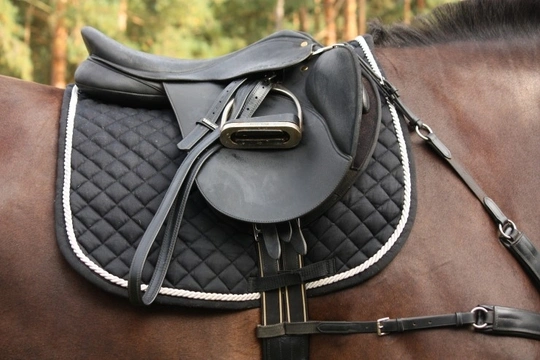
Treating Skin Problems That Make Saddling Your Horse Difficult
Riding in a saddle that fits a horse correctly is of paramount importance, but things like sores, injuries, and skin conditions affecting the back, withers, and girth areas can make saddling painful and stressful for your horse. Recognising signs of discomfort before you tack up saves your horse from unnecessary pain and helps prevent behavioural problems like bucking or refusing to be saddled.
Checking your horse’s back, withers, shoulders, and girth area regularly—especially after riding—is essential. This routine check should be part of responsible ownership, not only when purchasing a new saddle or girth. Even seemingly minor issues, such as a stirrup bar pressing into the horse’s side, can cause serious problems over time if unnoticed.
For optimal care, professional saddle fitting by a qualified saddler ensures the tack fits perfectly, minimising friction and pressure points that lead to skin damage. Below are seven common skin problems affecting horses that can make tacking difficult, along with prevention and treatment tips.
1. Sores Around the Withers
Sores around the withers often result from a saddle with an incorrect pommel width. A saddle too wide drops and rubs against the area, while a saddle too narrow sits too high, creating pressure points. Early signs include small swellings called oedemas that fill with fluid and may break open if unresolved, causing painful raw sores. Promptly addressing saddle fit is key to preventing these wounds.
2. Loss of Coat Pigment and Dry Patches
Friction from ill-fitting tack not only causes sores but also hair loss and pigment changes in the coat. Patchy areas with white regrowth or dry spots often signal repeated rubbing. These changes indicate sustained discomfort and highlight where your saddle or girth might be causing harm. Regular grooming and saddle checks can catch these changes early.
3. Swellings Caused by Stirrup Bars
Stirrup bars can sometimes press into the horse’s sides, causing painful swellings and in severe cases, skin breakage. After riding, carefully run your hand along the girth and saddle area to ensure there is no discomfort or visible skin damage. Adjustments or padding might be necessary to alleviate pressure.
4. Girth Sores and Oedemas
An ill-fitting or dirty girth can cause painful oedemas resembling large blisters. These girth sores are difficult to treat and can keep your horse out of work for weeks. Regularly cleaning girths and ensuring correct girth size and positioning help prevent these painful skin issues.
5. Rain Scald (Rain Rot)
Rain scald is a bacterial skin infection triggered by prolonged wet conditions, common during winter but possible year-round. It causes painful scabby rashes mainly on the back and croup area, making tacking very uncomfortable. Treatment involves keeping the horse dry, daily grooming, and veterinary-recommended topical treatments. Early intervention is vital as the infection can take weeks to clear.
6. Other Notable Skin Conditions
- Hives: Allergic reactions causing itchy, painful raised welts that make saddling impossible until resolved.
- Sweet Itch: A hypersensitivity to midge bites, which inflames skin mostly along the back and belly. Affected horses may need to stay indoors during midge seasons and wear protective fly sheets.
- Ringworm: A contagious fungal infection resulting in circular hairless patches, which are painful and unsuitable for tack placement until fully healed.
- Rug Sores: Even well-fitting rugs can slip and cause sores. Regular rug checks and ensuring proper rug fit help avoid these discomforts.
7. Importance of Regular Back and Girth Area Checks
Regular inspection of your horse’s back and girth area, ideally after every ride, is essential for early detection of skin problems. Look for sores, swelling, hair loss, or unusual coat texture. Clean your girths regularly to reduce bacterial buildup that can exacerbate skin issues.
If you discover skin problems, avoid using the offending saddle or girth until a qualified saddler or vet has assessed your horse’s condition. Early intervention can prevent long-term damage and ensure your horse remains comfortable and willing when tacking up.
Conclusion
Good saddle fit and attentive skin care play crucial roles in your horse’s comfort and performance. By routinely checking for skin problems around tack contact areas and addressing issues promptly, you protect your horse from pain and behavioural challenges. Responsible horse ownership involves vigilance, gentle handling, and professional support whenever skin problems arise.



